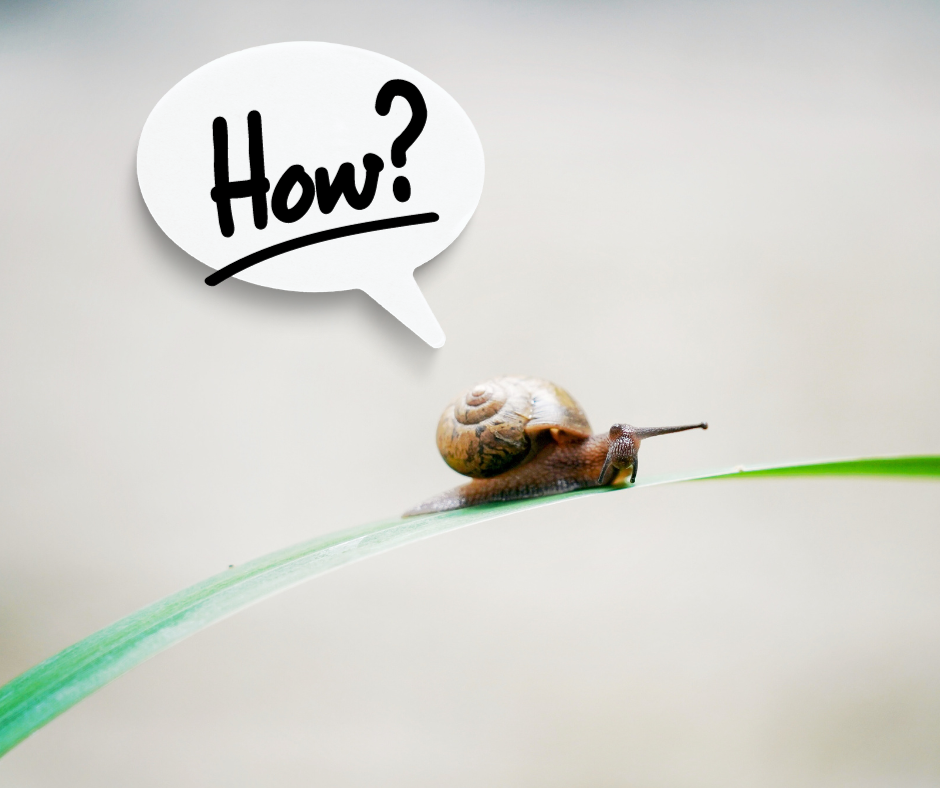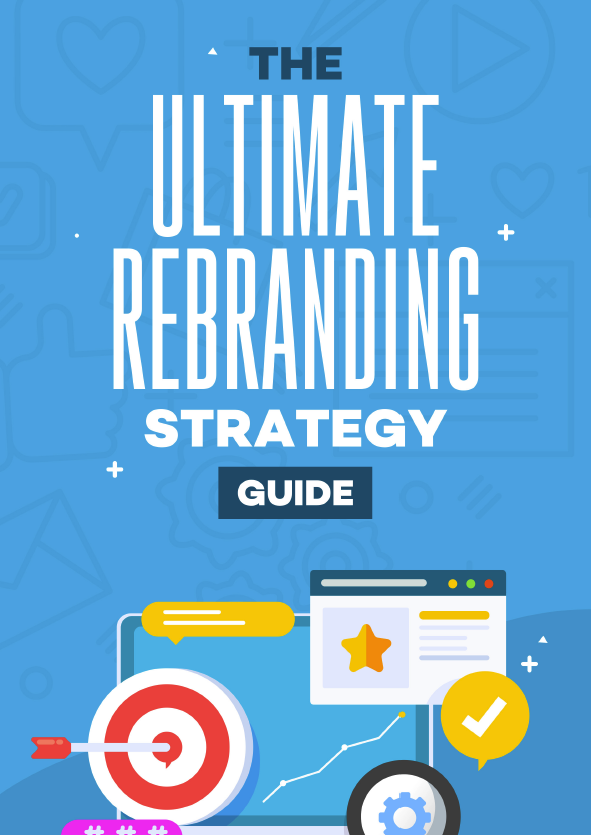You’ve finally taken the leap: you’re selling your handmade paperweights that look like snails! And you’ve even made a website to sell them on!
Your friends and family have encouraged you to take the leap and try your hand at building an online following for your precious crafts.
Then, terror strikes.
Selling your snails online hasn’t led to quite the boom in sales you were hoping for.

You begin looking into better ways to market your product, and that’s when things get overwhelming.
SEO, CRO, CTA…the amount of acronyms alone is enough to frighten even the toughest snail business owners (get it?).
Before you think about throwing in the towel, let’s take a look at one of those acronyms we mentioned earlier and try to understand how it can actually benefit your business: CRO.
CRO stands for Conversion Rate Optimization. To put it plainly, it’s how you increase the number of specific actions people complete on your page, which in turn creates more leads for your business.
Okay, but what does CRO mean practically?
Well, if people are coming to your website, taking a look at your snail paperweights, and then leaving, that means there are very few conversions happening.
However, if the people checking out your website are converting and buying your product, then your marketing strategy is probably well-optimized!
And it doesn’t just have to be purchases either! CRO can apply to people signing up for your newsletter, downloading your guides on crafting their own crustacean paperweights or subscribing to your social media accounts.
Conversions can be just about anything, and they’re one of the best ways to continue pushing your merchandise to already-interested leads.
Having a good CRO strategy can bolster your business’s traffic, whether you’re running a brand-new website or an established storefront.
It may seem daunting, but if you’re ready to learn more about this marketing strategy, read on below!
Why Conversion Rate Optimization Matters
Before we get into everything that makes up Conversion Rate Optimization, we first need to really understand why this marketing strategy is so important.
Fundamentally, the benefit of CRO comes down to deepening your knowledge of a customer’s behavior. More specifically, your customers.
Here’s an example: you’ve noticed that, at first, very few people are making purchases on your website.
However, you start adding a blog section to your site with a few helpful articles, more people are engaging with those resources and, from there, purchasing your products!
Because of the additional resources you provide for your customers to engage with, your sales go up, meaning you successfully optimized your conversions!
For you, that means you’re getting a better ROI (that’s another acronym that means “return on investment”) for your marketing efforts and any other money you’re spending on running your business.
So, CRO benefits you as the business owner, but it also does something else that’s pretty fantastic as well…
It benefits the customer!
Because of the great newsletters, blog posts, and videos you’re putting out, as well as the excellent site design you’ve created, customers are enjoying the overall brand experience they’re encountering.
By having a better time exploring your website and products, they’re being led to purchase your merchandise because they feel like you have something worthwhile to offer.
And you do! Because you’re taking the time to make a product and experience that is tailored to your audience.
The cyclical nature of CRO ultimately builds customer loyalty and satisfaction, one of the most invaluable things in the world of marketing.
Loyal customers will not only come back to your shop to purchase more of your product, but they’ll also recommend your product to others.
“Wow! That’s pretty great,” you say.
We agree! Conversion Rate Optimization is one of the best ways to steer your marketing efforts in the direction of the consumer.
Key Elements of Conversion Rate Optimization
“Wait,” you say. “That all sounds great, but how do I actually go about doing that?”

That’s a fantastic question! So, let’s look at some Conversion Rate Optimization best practices and essential elements to get the most out of your business.
1. Data Analysis
Data is one of the most valuable parts of CRO marketing. Boiling your campaigns down into what works and what doesn’t is the backbone of all marketing, and that rule of thumb applies here as well.
So, how can you actually get a real number out of your site?
Well, it starts by tracking the desired conversions you’re going for.
Let’s say you want to see how many people are signing up for your brand’s newsletter after reading an article on your blog.
You can take the number of people signing up for your newsletter divided by the number of people visiting your website, multiply that number by 100, and all of a sudden, you’ll have a percentage!
That percentage is your conversion rate, and by comparing it to other conversion rates in your industry, you can get a better idea of if your current marketing efforts are working.
As opposed to just putting out new products and content and hoping for the best, you can begin to experiment with different parts of the customer’s journey and identify what might drive more conversions.
Finding those metrics to track your conversion rate can be aided with the use of some data collection tools, such as Google Analytics and Semrush.
Using these tools can help aggregate a lot of the otherwise confusing data your website is collecting and organize it for you.
From there, you can begin the process of analyzing and identifying where you might be better spending your time, whether it’s with your newsletter, your website’s design, or your blog.
One quick note: Choose a few key performance indicators to focus on. It can be overwhelming, and if you’re not careful, you’ll focus on the wrong things. For Conversion Rate Optimization, focus on those stats that drive conversion.
2. Conversion Funnel Analysis
Earlier, we mentioned something called the “customer’s journey”.
It can also be called the “buyer’s journey” (or something like that), but it’s a pivotal part of understanding conversion funnels.
In a nutshell, conversion funnels are the process a new prospect goes through before purchasing your product.
At the very top of the funnel, the customer enters the awareness stage.
This is when they first encounter your product, either by coming across an ad or hearing about it from a friend.
At this stage, your potential new customer is probably undecided about whether they want to purchase your product. But, they are aware that it exists, and that’s a good first step!
As they move into the middle of the funnel, your would-be buyer begins considering your product more seriously.
This is where content and guides you’re providing come in handy.
Perhaps your buyer is interested in your snail paperweights, but they need a wee bit more convincing.
So, they check out a blog article of yours entitled “20 Reasons Why Snail Paperweights are Superior to Caterpillar Paperweights.”
Informative! They’re feeling a bit more confident about your product than they were before, and so they move down the funnel.
Towards the bottom of the funnel, the buyer enters the point of no return.
Okay, that was a little dramatic. Basically, this is where the customer decides whether or not they’ll convert, or purchase your product!
Maybe they’ve read reviews, checked out guides, and compared your snail paperweights against other snail paperweights. Whatever it may be, they’re ready to make a decision.
And they decide to buy! Yay!
Your would-be buyer becomes an actual buyer and exits the funnel as a successful conversion.
The reason why conversion funnels are so useful for your business is because they plainly lay out the process by which your customers are finding and purchasing your products.
There are many different places where the funnel can get “blocked,” so to speak, and prevent potential conversions from moving forward.
By analyzing the journey your previous customers have taken, you can identify what is and isn’t working for them and optimize your site and content based on that.
It may be that your website just isn’t visible enough as is, and so customers aren’t even entering the first stage of the funnel to begin with.
Or, it could be that they are hearing about your product, but there are too few reviews of your merchandise or no resources for them to learn more about your product on your site.
Whatever the reason, taking the time to analyze and make changes to your brand based on the buyer’s journey can hugely benefit both existing and new customers and streamline your conversion funnel.
3. User Experience (UX) Optimization
User Experience, or UX for short (hey, another handy acronym!), is a fundamental part of Conversion Rate Optimization best practices, and for good reason, too.
As new prospects encounter your website, the way your pages are displayed can be the difference between potential buyers moving further down the conversion funnel or leaving your site in a hurry.
A clunky, slow website with hard-to-read fonts, blurry pictures of your product, and a logo that looks like it was from the early 2000s won’t give off the best impression to your customers (no matter how cute your snail paperweights are).
However, a website that isn’t bogged down by any hosting issues, has plenty of resources and content for would-be buyers, and an easy-to-navigate and aesthetically pleasing layout will definitely help business.
Think about your site as your storefront! You want your store to be set up so customers can move easily about and view all your products while enjoying their experience in the space itself.
The same goes for your website. Start by breaking down and analyzing what’s working for your page and what isn’t.
This also applies to mobile apps if your product is in that space.
If screens are taking too long to load, or if registering for/purchasing your product involves clunky, confusing forms, you should work to remedy those ASAP.
In most cases, user experience problems can be aided with the “less is more” principle.
Building a website or app is exciting, and you may be eager to take advantage of all the bells and whistles offered.
However, look at some of your favorite brands and note how easy it is to navigate their virtual storefronts. Use these successful sites to inform how you to organize your own.
Typically, the best ones provide an easy, clear route to purchasing the actual product itself, while also making it easy to find additional information for the customer who needs to know more before they buy.
4. Call-to-Action (CTA) Optimization
Crafting better blog pieces, making videos, and keeping up with your newsletter subscribers are all important and valuable parts of optimizing your brand and connecting with your audience.
It’s also incredibly time-consuming.
Don’t get us wrong, these are all necessary parts of the CRO equation, but the process can feel like going at a snail’s pace. (Are we overdoing it on the snails yet?).
Luckily, there are still other ways to tweak your conversion rate for the better, and you won’t necessarily have to spend hours or days working on it.
One of the best ways to do so is by starting with Call-to-Action (CTA) Optimization.
CTA Optimization starts by analyzing your actual CTAs and seeing how well they’re doing at their intended action.
Are people seeing the CTAs on your website, at the end of your blog or video, or in your emails? More importantly, are they actually clicking on them?
If not, it may be time to adjust the language a little bit.
Direct, to-the-point language is always best for CTAs, as well as language that clearly describes what the potential clicker may be doing.
For example, a CTA that says “Download my guide here!” is much more to the point than “If you want to learn more about snail paperweights, click on this button to download the guide onto your computer.”
The placement and design of your CTAs also matter. If your CTA is at the very beginning of your blog, your reader will forget it by the time they finish your piece.
With both the design elements and the copy of your CTA, experimentation is key to learning what converts best.
A/B testing (trying out two different phrasings or placements and comparing how they perform) or other similar experimental practices can help understanding what your audience reacts to best.
From there, you can continue to tweak and refine every part of your conversion rate and bolster your brand’s traffic and revenue.
5. Landing Page Optimization
So, a potential buyer has clicked your beautiful and cleverly crafted CTA.
Where are they going now?
Well, they should be heading to a landing page, which is built around guiding your customers to a specific conversion!
Whatever information your CTA lacks, your landing page should have, whether that’s more information on a guide you want them to download or an actual page where they can purchase your product.
Landing pages that are built for Conversion Rate Optimization center around attention-grabbing headlines and persuasive copy, which will take time to fully optimize.
Getting the right language to successfully convince your target audience to convert means understanding the most effective language.
It also comes down to streamlining your form fields (or places where potential buyers put in their information) to reduce any friction in the conversion process.
Landing pages are the smiling face of your brand. Making sure that smile is as big and bright as possible is another step towards improving your CRO.
6. Social Proof and Trust Building
One of the best marketing tools you can leverage for your target audience is the recommendations buyers get from other buyers.
This kind of social proof is the most fundamental way people know they can trust your brand.
Your website may be incredibly easy to navigate, your email may be super informative and written in the exact language your audience uses, and you could have blog posts coming out of your ears!
However, if you lack consistent positive reviews and testimonials, your buyers won’t feel like your product is trustworthy.
Getting that kind of reinforcement is hard to achieve inorganically, as it often depends on making a product that excites your buyers so much that they feel compelled to leave a review in the first place (which, obviously, your snail paperweights do).
However, one place to start is by pursuing certifications or achievements in your field and writing case studies on your product that show off your expertise and experience.
These are much more controllable by you and can help ease any of your buyers’ insecurities about your product while you wait for the 5-star reviews to roll in.
7. Multimedia Optimization
While easy-to-read, direct, engaging copy is one of the most immediate ways to optimize your website, you can’t ignore the images and videos that go alongside it.
Visuals can help aid potential buyers as they move throughout your website by giving them more information, whether that’s in the form of an infographic or a fun video.
These can also help break up the monotony of reading through a blog post, or simply be a handy download to use for your CTAs.
When optimizing for these multimedia elements, it’s important to analyze factors such as fast load times and accessibility.
If your videos are set to autoplay on your site but they’re also bogging down the load time of your page, it might be better to have them placed elsewhere so they aren’t interfering with your conversion funnel.
It’s also important to see how your images and videos appear across devices, not just on a laptop.
While you’re most likely designing your website on your computer, most people finding your product will probably be doing so on a mobile device.
Seeing how your site looks on a phone or tablet (and conversely seeing how your app appears on a computer) can help you refine and tweak the visual elements you’re using to tell your story.
Conversion Rate Optimization Best Practices
Conversion Rate Optimization is no small undertaking.
We’ve just looked at 7 key elements to keep in mind as you optimize your conversions, and each of them can take some serious time and effort.
But that time and effort are worth it, and if you go about it the right way, your snail paperweights will be in the hands of new customers everywhere!
So, what’s the right way to orchestrate your grand CRO plan?
Well, start by conducting comprehensive website audits.

Data analysis tools will help aid you in your audits. Analyze the way visitors are engaging with your site or app, see how long they stay on it (or how fast they leave—yikes!), then optimize your brand’s presence using what you learned.
A/B testing is another great way to test out new emails, blogs, or CTAs.
While it takes more time, crafting different phrasing in your messages and experimenting with placement and design will point you in the right direction when it comes to what appeals to your audience most.
This takes continuous monitoring and analysis but if you’re passionate about your business (which we’re sure you are), then it’s crucial.
User feedback is also very helpful during this step.
If you already have a following, conduct surveys asking your buyers what they like and dislike about your website.
If you’re just getting started, friends and family are a great resource. Ask them to explore your website and tell you how easy, or not so easy, it is to navigate.
Finally, make sure you stay up to date with the latest trends and techniques in your industry.
Know your market and be humble. The best business owners pay attention and learn how to adapt when trends change.
While snail paperweights may be all the rage right now, who knows? The coming years may show a shift favoring bumblebee paperweights.
Take Advantage of Conversion Rate Optimization
Wow, that was a lot of information!
We’ve covered everything from data analysis to the conversion funnel to optimizing the font on your webpage.
And look at you! You’ve learned so much!
We understand that maybe CRO isn’t quite what you had in mind when set out to sell your snail paperweights (or whatever it is that you want to sell).
It can be pretty daunting putting your product out there in the first place, let alone having to memorize tons of acronyms to strengthen your personal brand’s marketing.
But it is worth it, and with time and a little effort, you’ll find yourself getting pretty good at it, too.
Not only that, but you’ll build a vision for your product that you’re proud of and excited to share with the world around you.
So, don’t give up! You’ve got something great to offer the world, and CRO is one of the best ways to make sure they see it.
And if you’re not sure what your business is missing or just looking for next steps, check out our brand assessment!
P.s. We thought the snail paperweight thing would be a funny imaginary product example but if you want to be delighted, go to Etsy and look them up. It’s magical. You’re welcome.
Glossary (Because we used a lot of marketing terms in this one)
- SEO – Search Engine Optimization. Basically the process of getting more traffic to your website
- ROI (Return On Investment) – a measure of the profitability of an investment
- Conversion funnel – aka “the buyer’s journey” or “the customer’s journey.” The process of taking a person from product awareness to paying customer
- UX (user experience) – how a user experiences your product/website. Includes functionality and enjoyment
- CTA (Call-To-Action) – what you want your website visitors to do (i.e. purchase a product, sign up for a newsletter, etc.)
- A/B Testing – comparing two versions of an ad, app, website, etc. to see which one performs better
- Landing page – a standalone webpage created for a specific marketing goal (i.e. generating leads or selling products)
- Social proof – evidence that other people have purchased your product or service and have found it valuable

